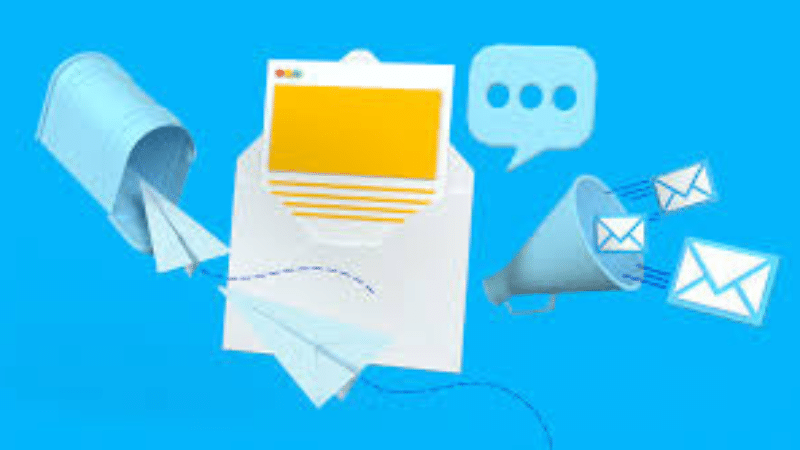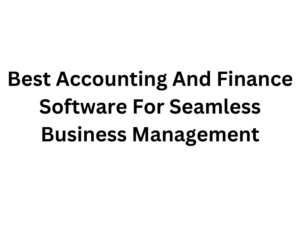Email marketing offers a powerful way to connect with your audience. It’s affordable, easy to manage, and effective in delivering results. This guide will cover all the essential steps, from building an email list to writing engaging emails that drive action.
What is Email Marketing?
Email marketing involves sending emails to individuals who have opted in to receive messages from you. These emails can share important updates, promote products, or foster a deeper relationship with your audience.
Businesses use email marketing to:
- Directly reach customers.
- Share valuable content that builds trust.
- Increase sales with targeted campaigns.
Email marketing works for businesses of all sizes, offering great flexibility and control over how you connect with your audience.
Why is Email Marketing Important?
Email marketing stands out for several key reasons:
1. Direct Communication
Emails go directly to the inbox, ensuring that your messages reach your audience. Unlike social media, where posts might get lost in algorithms, email gives you complete control over your message’s delivery.
2. High ROI
The return on investment (ROI) for email marketing is impressive. On average, businesses earn $36 for every $1 spent on email marketing.
3. Build Relationships
Email marketing lets you nurture relationships with your audience. Regular updates create a connection, keeping your brand top of mind.
4. Boost Sales
Targeted emails that promote products, offer discounts, or announce new items can drive purchases.
5. Measurable Results
Track email performance with detailed analytics. Open rates, click-through rates, and conversions show the success of your campaigns.
How to Start Email Marketing
Starting an email marketing campaign is simple. Here are the steps to get you going:
1. Pick an Email Marketing Tool
Select a tool that helps you design, send, and track your emails. Popular choices include:
- Mailchimp: Ideal for beginners with a free plan available.
- Constant Contact: User-friendly, with a variety of templates.
- HubSpot: Offers integrated CRM and email marketing features.
- Getresponse : User-friendly, with a variety of templates.
2. Build Your Email List
To succeed, you need a list of subscribers who have expressed interest in hearing from you.
How to Collect Emails:
- Add a signup form on your website.
- Offer a free resource, like an eBook or discount, in exchange for email addresses.
- Share your signup form across social media channels.
3. Set Clear Goals
Define what you aim to achieve with email marketing. Popular goals include:
- Growing your subscriber list.
- Promoting new products or services.
- Driving traffic to your website or online store.
4. Craft Your First Email
Write an email that captures attention and provides value. Make sure to include:
- A compelling subject line.
- Valuable content relevant to your audience.
- A strong call-to-action (CTA), like “Shop Now” or “Learn More.”
5. Send and Analyze Performance
Send your email to your list and use analytics to evaluate its success.
Tips for Writing Engaging Emails
To get the best results, keep these tips in mind while writing your emails:
1. Understand Your Audience
Create content that speaks directly to your audience’s needs and interests. Address their pain points or desires with helpful solutions.
2. Write Compelling Subject Lines
The subject line is your first impression. Keep it short, clear, and relevant to what’s inside. For example:
- “Don’t Miss This Exclusive Offer!”
- “Save Time with These 5 Simple Tips”
3. Keep the Email Simple
Avoid long paragraphs and complex language. Use clear, concise language that’s easy to read.
4. Have One Clear Objective
Each email should have one main goal. Whether you’re promoting a product or offering helpful advice, focus your message.
5. Include a Strong Call-to-Action (CTA)
Encourage your readers to take action. Examples of effective CTAs:
- “Buy Now”
- “Join the Sale Today”
Benefits of Email Marketing
1. Personalized Communication
Emails allow you to personalize messages based on customer behavior or preferences. Personalized emails feel more relevant, leading to better engagement.
2. Affordable for Everyone
Email marketing is a budget-friendly option for businesses. Many tools offer free plans, making it accessible to small businesses and startups.
3. Foster Customer Loyalty
Frequent, value-driven communication strengthens trust and builds loyalty. Customers who hear from you regularly are more likely to return.
4. Drive Traffic to Your Website
Email marketing encourages recipients to visit your site. Direct them to relevant pages or promotions for more business.
5. Works Well with Other Channels
Combine email marketing with your social media and content marketing efforts. Share email content on social platforms to expand your reach.
Common Mistakes to Avoid
1. Ignoring Mobile Optimization
A large number of emails are opened on mobile devices. Ensure your emails look good on smartphones by using responsive design.
2. Overloading with Information
Don’t crowd your email with too much information. Stick to one core message and keep it simple.
3. Sending Too Many Emails
Don’t overwhelm your subscribers by sending emails too frequently. A regular, consistent schedule works best for most businesses.
4. Weak Subject Lines
A weak subject line may prevent people from opening your email. Aim for catchy and compelling subject lines that grab attention.
5. Lack of Value
Ensure every email provides something of value. Readers should feel that they gained something from opening your email, whether it’s useful information or a special offer.
FAQs About Email Marketing
1. How often should I send emails?
Stick to a regular schedule. Weekly or bi-weekly emails work well for most businesses.
2. Can I start email marketing for free?
Yes, several email marketing platforms offer free plans for small businesses and startups.
3. How can I avoid having my emails marked as spam?
Use a professional email address, get explicit permission before emailing, and avoid using spammy words like “free” in your subject lines.
4. What’s the best time to send emails?
The best time to send emails varies, but late mornings or early afternoons often yield good results. Test different times to see what works best for your audience.
5. How can I grow my email list?
Offer a free resource, like a guide or discount, to encourage people to subscribe to your list.
Final Thoughts
Email marketing is a simple yet effective tool for businesses to reach their audience, build relationships, and increase sales. With the right strategy, it can become one of your most powerful marketing channels. Start with the basics, track your progress, and refine your approach over time. Keep your messages relevant, personalized, and valuable, and watch your email marketing efforts grow your business.




